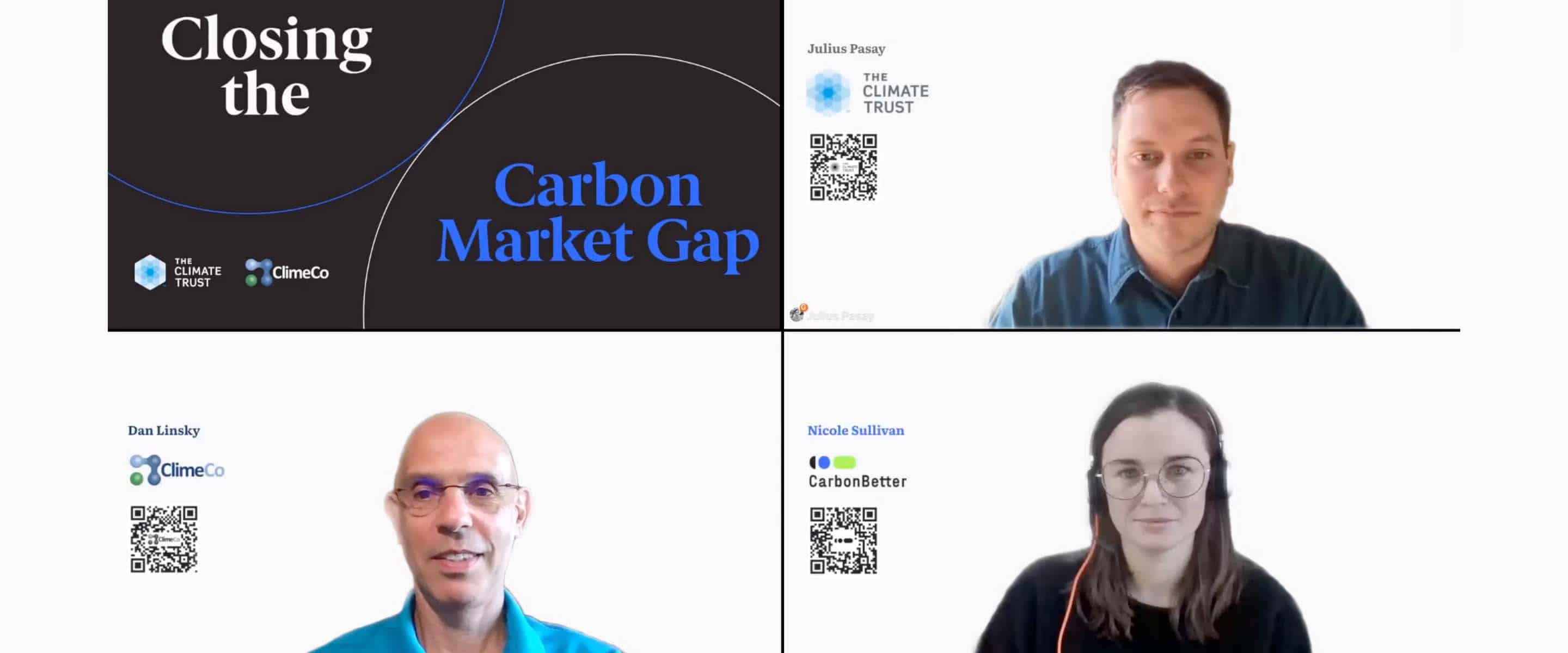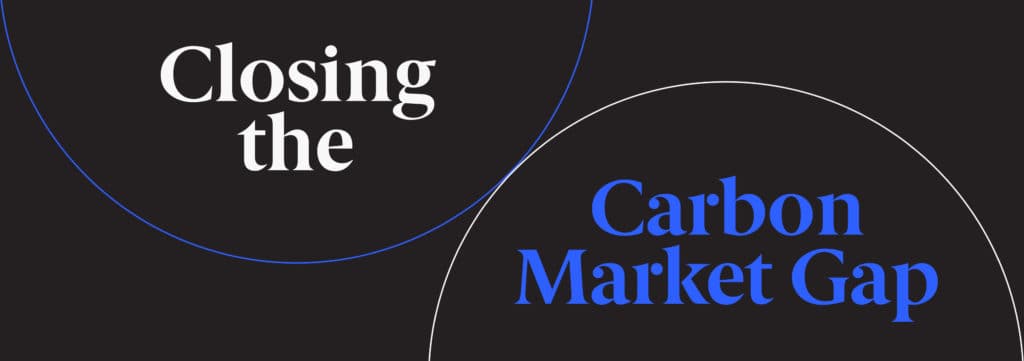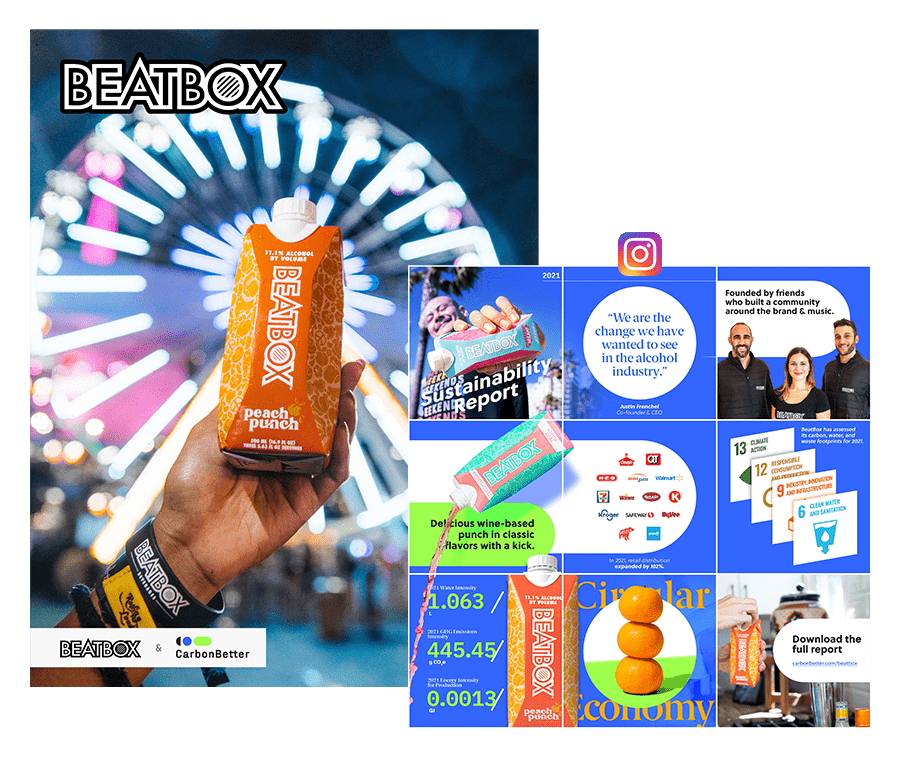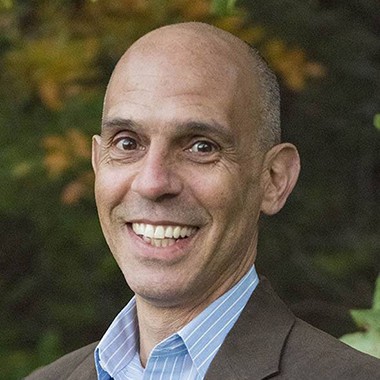Webinar Recap: Closing the Carbon Market Gap


Closing the Carbon Market Gap
According to Bank of America, carbon offset supply may need to grow as much as 50x by 2050 to achieve net-zero emissions. Watch the replay as three experts discuss efforts to close this gap and the challenges in developing projects and issuing credits at scale.
Based on data from a recent study, carbon offset production likely needs to increase by 50x to meet net-zero goals by 2040. Will it happen?
Last week, we had the chance to sit down with Dan Linsky from ClimeCo and Julius Pasay from The Climate Trust, two leaders in the carbon offset project development space, to discuss efforts to close the current supply gap in the carbon market, the complexities of project timelines, verification bottlenecks, and strategies for stakeholder education. The discussion also highlighted opportunities for collaboration, the importance of ensuring credit quality, and the growing demand for offsets as companies strive to meet ambitious net-zero goals. In this post, we’ll provide a recap of the key takeaways.
Register below to watch the full video replay.
How to Bring a Carbon Offset Project to Market
Nicole: Julius, can you talk us through what it takes to bring a carbon offset project to market?
Julius: So they can be pretty complicated. The first step is knowing the methodologies. The carbon markets are still evolving and developing, so sometimes the methodology, which are those rules for specific action and how you account for it, doesn’t necessarily exist, so you may have to start from scratch and design a methodology.
And once you do that, you have to conduct a feasibility study to see if it’s worth investing money up front. These projects take several years to get off the ground. They cost a lot of money up front. So can you model out how many offsets are going to be generated over time to make that, basically investment decision, whether or not it’s worth it to pursue that project.
But once you can identify a methodology match to the project you’re working on, or the projects you want to work on, you have to start doing outreach to those potential project owners. And I think I’ll probably mention this a few times throughout our time today, but carbon markets are new, and so there’s not a lot of knowledge out there about them. People don’t understand the language that we use and we try not to be jargony, but there is a lot of jargon. So, that outreach can take a long time to explain things to a landowner.
And then when you get to the phase of contracting a project, you might have to educate their attorneys for another six months. And so that takes a long time. And then once you do all that, that’s when you can start developing a project. And so you have to list a project with the registry, those registries ensure there’s no double counting and you’ve identified which methodology you’re going to develop it to, what standard. Then you have to do the actual development, which could mean a lot of different things depending on the project. And do all of the carbon modeling and accounting and get all the documents to prove eligibility and show that what you’re doing is above business as usual. Once you have all those documents together, you have to work with a third-party verifier.
All of these verifiers out there are accredited by Ansys to the methodology at the registry. So there’s a high level of standardization and high standards they all have to meet to be a third-party auditor. And so then you have to kind of manage and contract that process of verification. Once that’s complete and you’ve addressed all the issues that your third-party auditor finds, we do call that verification. Then the registry has to review that project (and again the registry is who set the rules and set up that methodology), and then hopefully you get your credits issued and you can start marketing and selling them or finish up marketing and selling them, which you’ve probably started in advance.
How Long It Takes to Bring Carbon Credits to Market
Nicole: Dan, can you dig in a little bit on how long it actually typically takes to bring credits to market on a new project?
Dan: At ClimeCo we develop a lot of industrial type of projects where we destroy greenhouse gases on those projects. So in those types of projects, it’ll take, as Julius described, maybe 12 to 18 months to develop the project by the time you either put it in a certain methodology, get all the pieces together, install the technology that you’re going to need, get the project listed and all that—and then once the project starts, you usually want to let it go for a year if you have to verify. And verifications in some of these are quite expensive, so you want to accumulate as many credits as you can before you do the verification, just to make it the best investment you can.
So let’s say a year or two, after that first 12 to 18 months—maybe another year the project is running and reducing emissions, but you’re not issuing credits yet because you haven’t done a verification. Then you do a verification, which used to be maybe four to six weeks to issue credits. Now it’s more like three to six months. So you’re looking at probably two years after you actually start the project, before you issue your first credits.
Opportunities to Optimize Project Development
Nicole: Julius, can you talk about opportunities you’re seeing to optimize project development efforts and timeframes?
Julius: As Dan mentioned, there’s a small pool of experienced professionals working in the carbon space. Because it’s really kind of exploded and taken off in the last couple years, what was a small community is rapidly expanding, and so there’s a lot of demand for the professionals that were there before the last couple years. And so we’ve seen a lot of movement from the registries or developers to other groups. So that’s part of the reason I think we’re seeing a delay with verifiers or going through verification—there are a lot more projects.
And also people—a lot of people working in the carbon markets are new and still getting up to speed because the carbon markets are very complicated. I think that’s one issue that’s going to address itself as more people enter the market though. And then the other one is what I mentioned before: I think it’s becoming more mainstream to understand carbon markets, but there’s still a lot of unfamiliarity with carbon markets and how they work. And for us, when we develop projects, a big time hurdle is explaining those carbon markets to the landowner or project owner and then their attorneys, and getting them comfortable with entering into the market and signing onto a decades long or centuries long commitment for their land.
I mean, that’s a big hurdle for folks. These commitments to sequester carbon, if you’re nature based, they’re significant commitments you’re making to the registry, to the developer you’re working with, and to the end buyer. And so that’s part of why this decision making process takes a long time, because without those real commitments we wouldn’t be able to sell carbon credits. But the market is certainly maturing again. People are becoming more familiar with it. There are more consultants out there who can lend their expertise. And so I think that hurdle is going to be overcome.
In terms of other opportunities to kind of optimize, there are a number of registries right now that exist and there is some overlap with them. And so there are a number of efforts right now to kind of increase liquidity and fungibility in the markets by kind of either making meta registries that help track overall or coming up with some agreed upon kind of core carbon principles. Because I think also, in addition to landowners having a big step up to commit to a project, buyers also are trying to navigate this market and it is complex to them, especially if they’re new to the market. So I think some of these efforts to make things a little more clear for buyers is also going to help us with timeframes and just moving this market along.
“I think there’s a lot more collaboration in this industry because of what we face as a planet and because we’re nowhere near getting there.”
Dan LINSKY, Senior VP of Voluntary markets at ClimeCo

SUSTAINABILITY SPOTLIGHT: BEATBOX BEVERAGES
The fastest-selling ready-to-drink cocktail and wine brand in the US is also on track to become the most sustainable.
CarbonBetter helped BeatBox measure and report on its Scope 1, 2, and 3 impacts, and implement an Environmental Management System (EMS) that tracks environmental performance and aligns its 75+ employees.
On Increased Demand for Carbon Credits
Nicole: Both of your organizations have been around for over a decade. Julius, can you talk a little bit about the increase in demand that you're seeing lately for credits?
Julius: we started this work in 97 when there really weren't carbon registries. In those early days we had funding from those energy facilities to offset emissions and we had to go figure out how to do that in a meaningful way. And so talking about demand, I think we were some of the only demand at that time. The compliance market with California, with their cap and trade program, they allow offsets as part of that. They started around 2012, 2011. So that created some extra demand, but only for projects that were developed in accordance to California's rules, which were a little different than the voluntary market. In the last few years, I'd say kind of ramping up in 2020, we saw a whole host of corporations, not just energy utilities, but Fortune 500s, breweries, even individuals making net zero commitments or carbon reduction commitments.
Competition Among Carbon Offset Project Developers
Nicole: Dan, what about increased competition? So we're obviously all in this together as we work to save our planet, but is there a spirit of collaboration amongst your competitors as y'all work to bring projects to market?
Dan: So if ClimeCo had no competition, there's no way we're going to get there. So we all realize that ClimeCo does a project type in the nitrous oxide (N2O) abatement space that nobody else in the United States (US) does. And Climate Trust is great at the nature-based projects that they are taking care of. And so what happens, if one of my clients is looking for a type of credit that I don't have, that we don't produce, then I can go to somebody like Julius or some of the other competitors out there and say "Hey, I need this vintage, this project type from Michigan" (or whatever) because I know they do those projects, and they say "Yeah, sure, we'll offer them to you so you can offer them to your client."
There's really a lot of collaboration amongst each other in that regards. It's also competitive. I mean, if it's a bid situation, I want to win it like any other industry, but I think there's a lot more collaboration in this industry because of what we face as a planet and because we're nowhere near getting there.
What Is a Quality Carbon Credit?
Nicole: So before we dig even further, I do want to kind of level set that not all carbon credits are created equal. So a carbon offset credit represents one metric ton of carbon dioxide equivalent, removed, sequestered, avoided or reduced. But there's a lot of different technologies out there. There are a lot of different ways to develop those credits. And so you do still have to compare credits and assess those credits for quality. Dan, can you walk us through what is a quality carbon offset to you?
Dan: Yeah, thank you for that question because quite recently, I'd say in the last six months, we've been seeing a term used—"high quality carbon offsets"—which I've been in this industry since 2005 and never heard that term really used as often as it is now. But nobody has a definition for what do they consider a high quality offset? So this will be my opinion:
Did it reduce a ton of carbon, and is it additional? Is it permanent? Is it third-party verified? Does it take care of leakage? Is it on a reputable registry? Those to me are the things that we should focus on as far as is it a quality offset? And all those other things are important but they're more preferences.
Watch the Webinar for the Full Conversation
The panelists explore even more topics in the 1-hour recorded webinar, so check out the full replay here. A huge thank you to our speakers for joining us to discuss the carbon market supply gap! We're grateful for their their leadership in the fight to save our planet and we will continue to amplify their voices so other companies are inspired and empowered to follow in their footsteps.
Meet the Speakers

Dan Linsky / Senior VP, Voluntary Markets
Dan Linsky is the Sr VP, Voluntary Markets at ClimeCo, a carbon and plastic credit project developer and consultancy.

Julius Pasay / Head of Whiskey Dev
Julius Pasay and The Climate Trust work to innovate and scale nature-based solutions to the climate crisis.
Meet the Moderator

Nicole Sullivan / Former Director, Climate Services
Nicole is the former Director of Climate Services at CarbonBetter where she helps businesses pursue sustainability and decarbonization goals.
At CarbonBetter, we believe in progress over perfection. It's not about doing everything—it's about doing something. With over a decade of experience in the energy industry, we partner with organizations to guide them in the transition to a net-zero economy. CarbonBetter's sustainability specialists work closely with partners across all industries to integrate sustainability solutions seamlessly into any business.
CarbonBetter helps organizations of all sizes measure, reduce, report, and offset their emissions, and tell stories about their sustainability journey.
Telling stories about sustainability efforts helps other organizations take action that will then, in turn, inspire others—it's never too early or late to start.